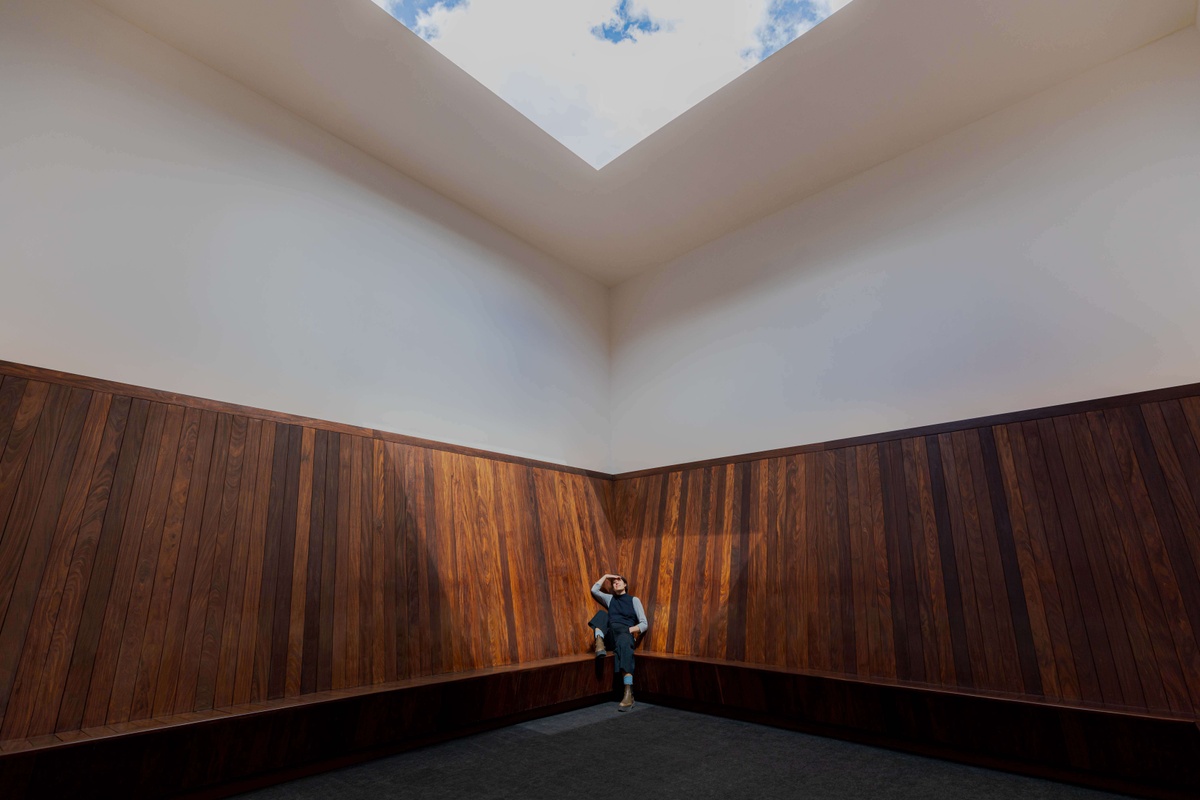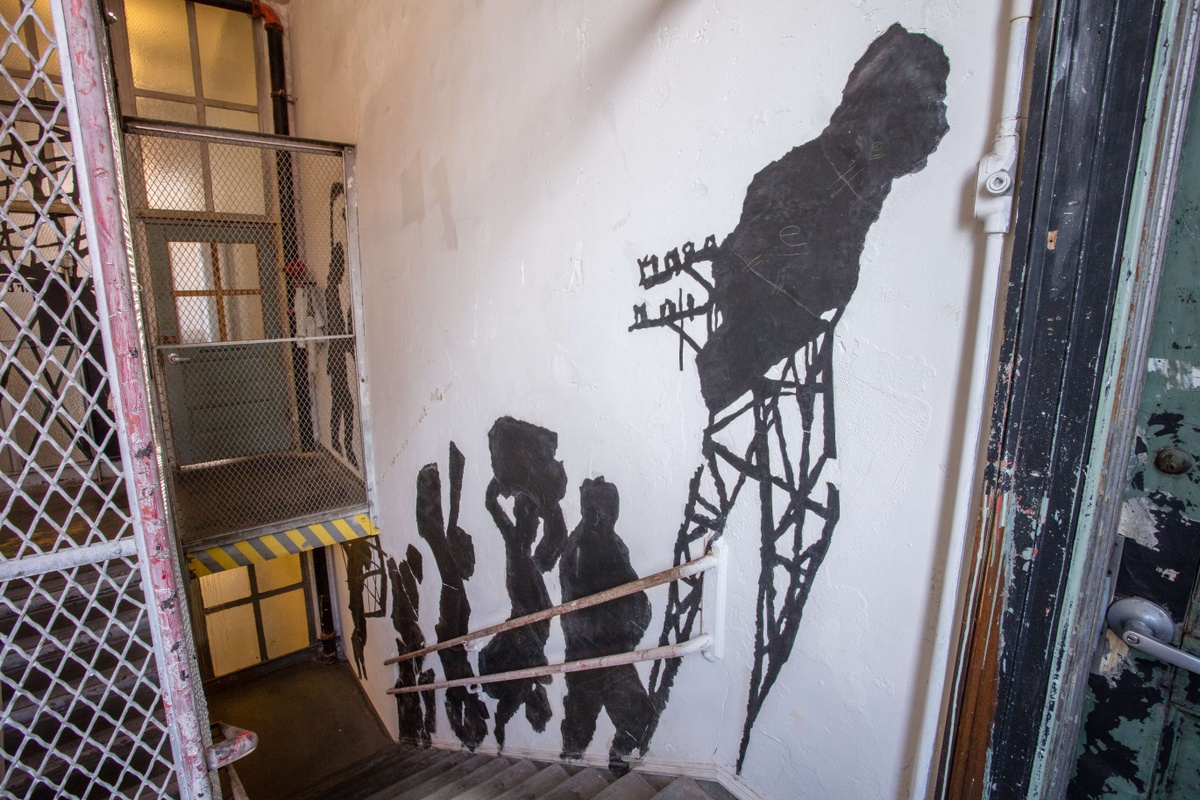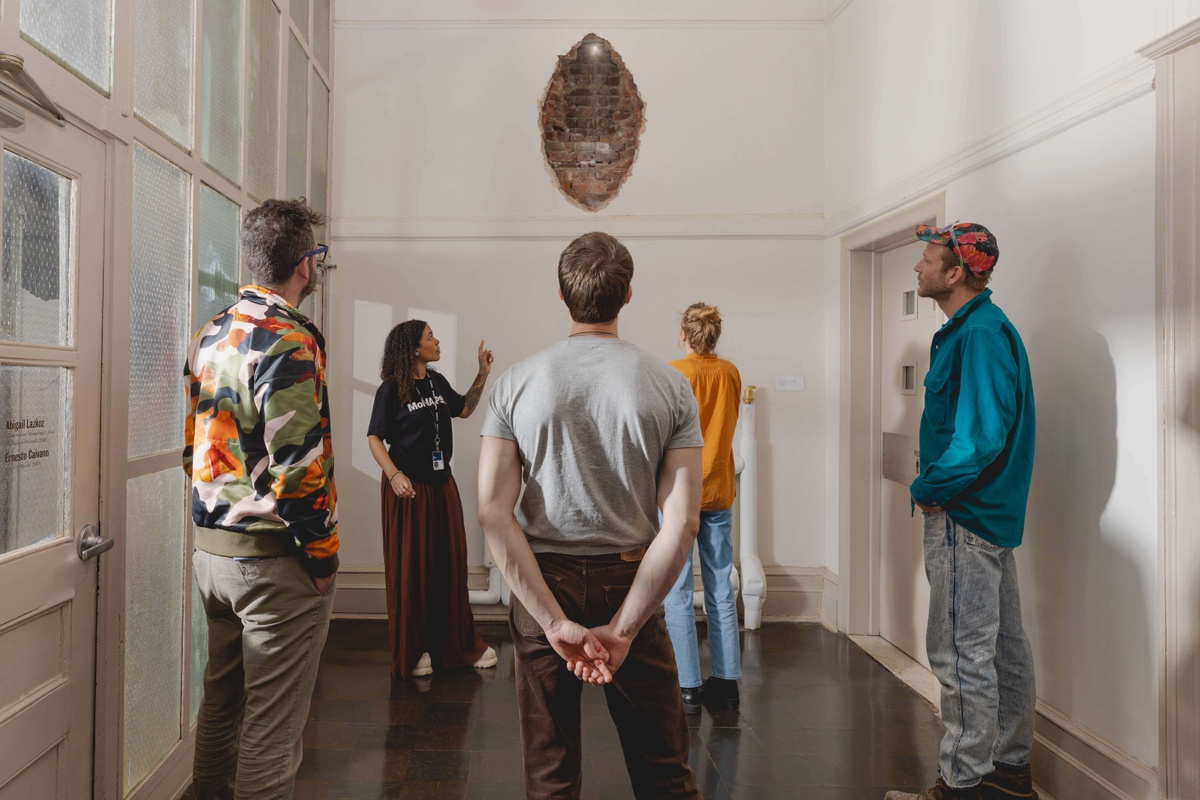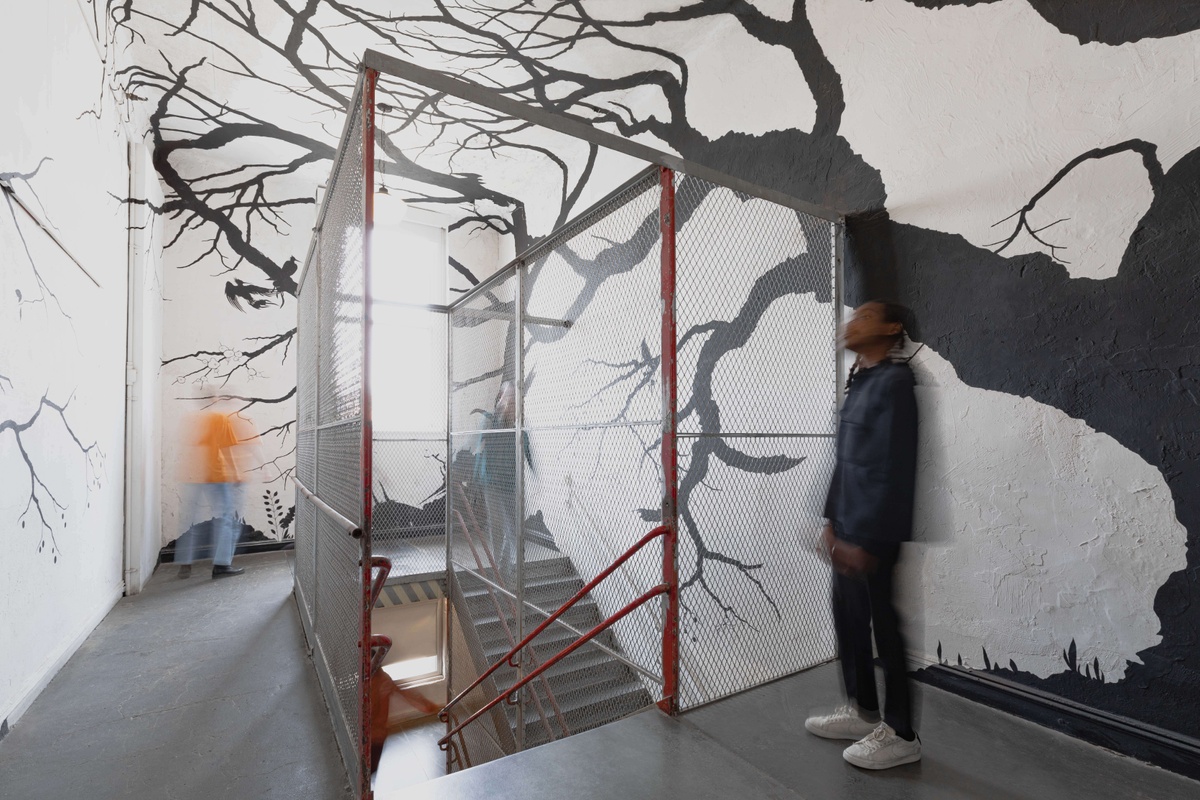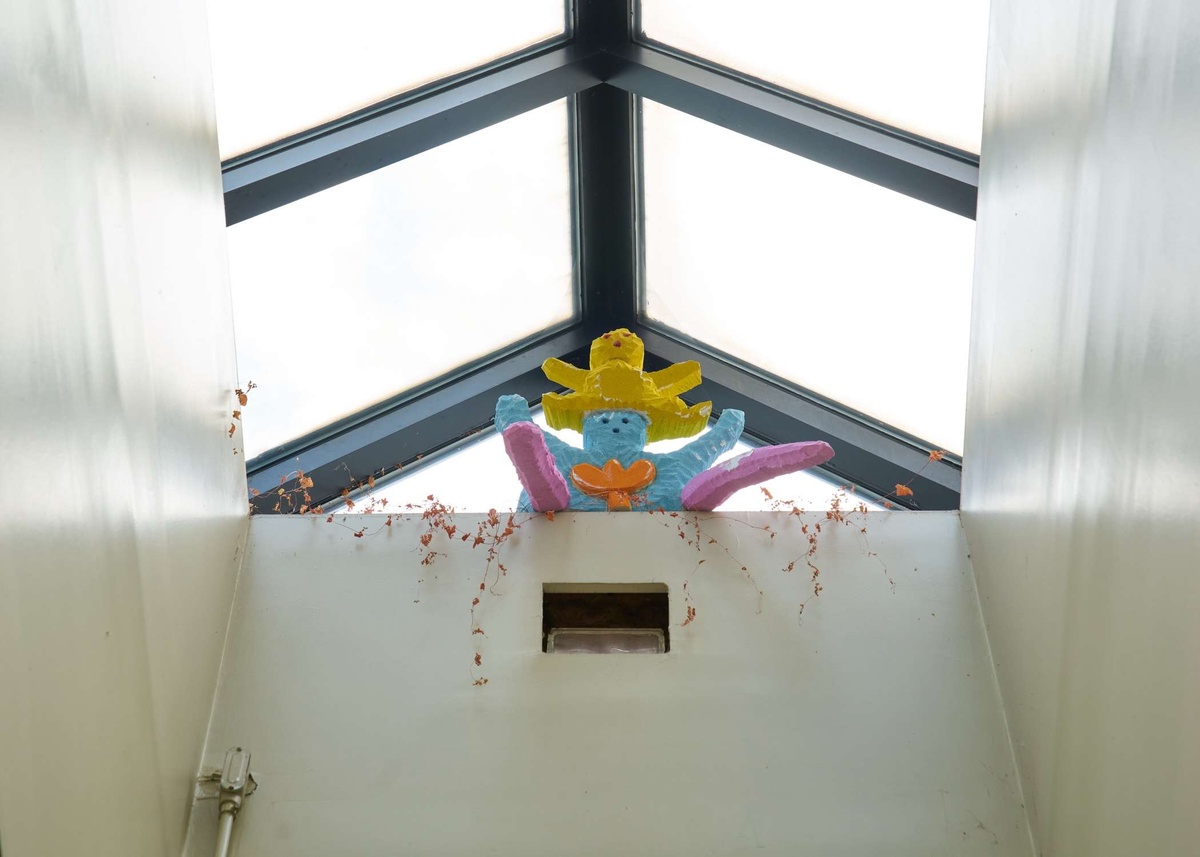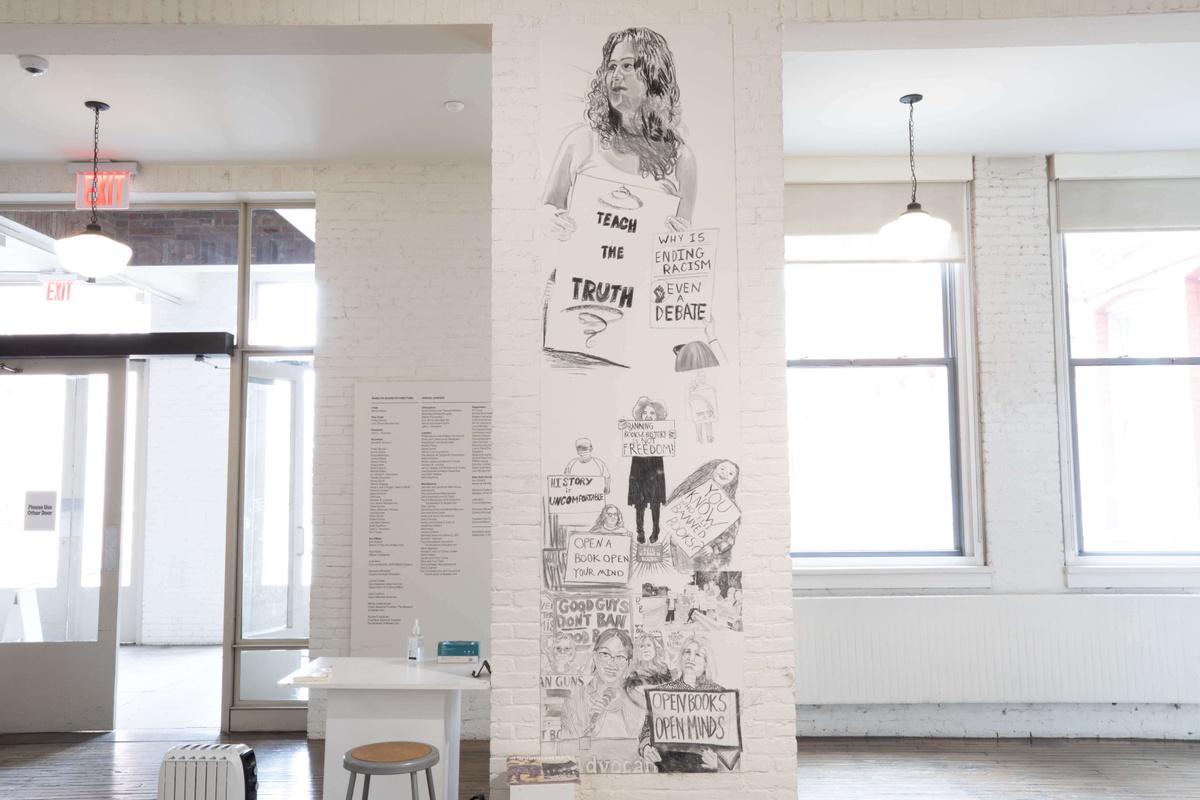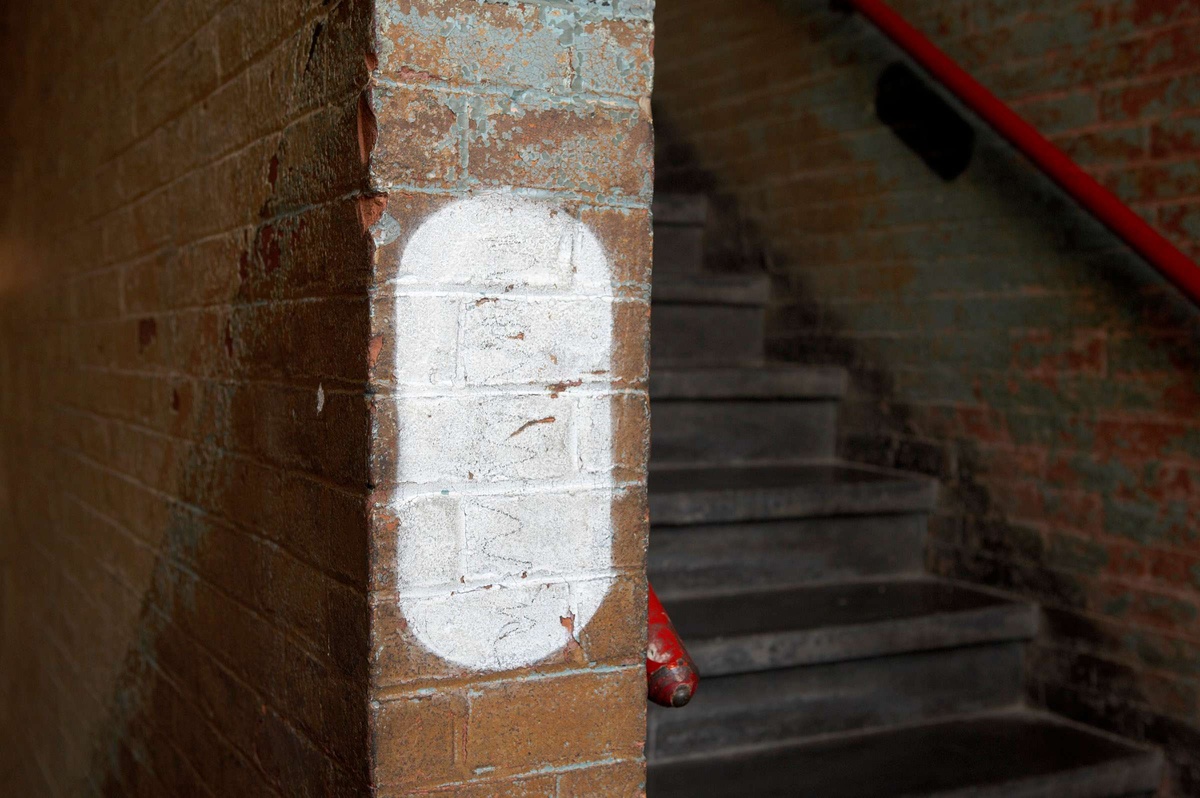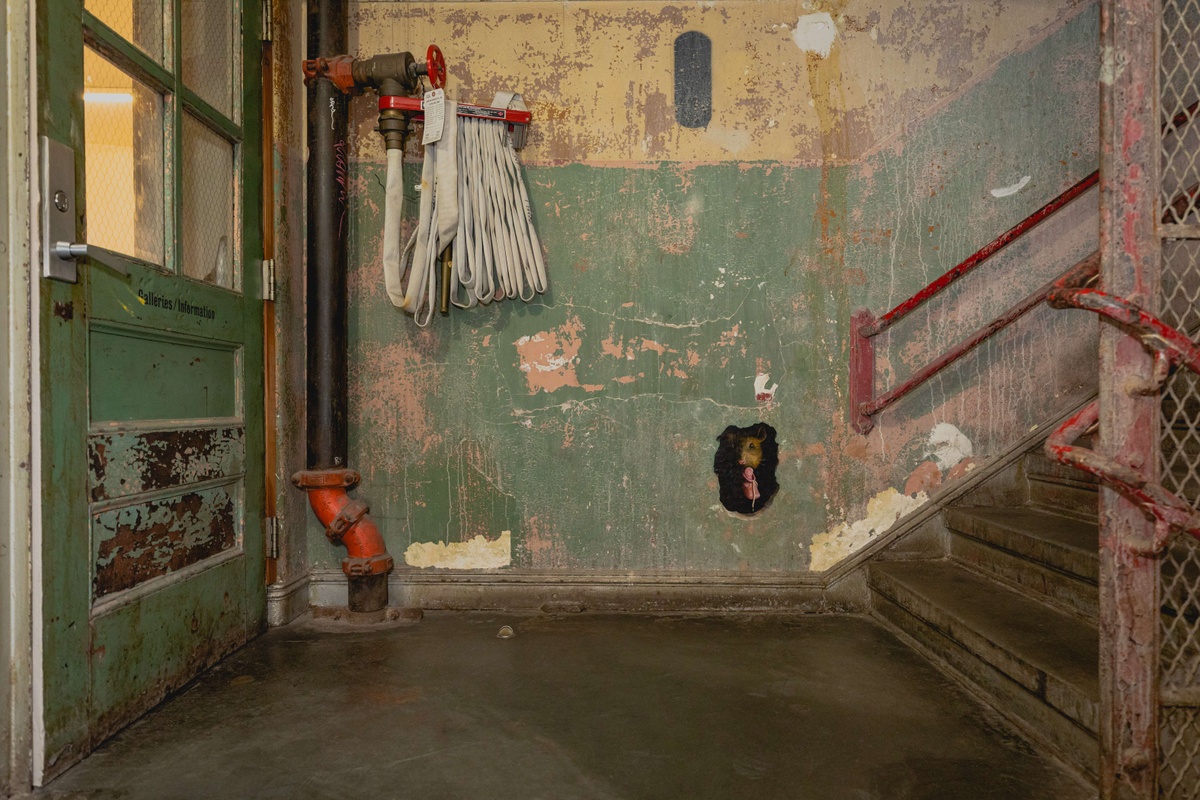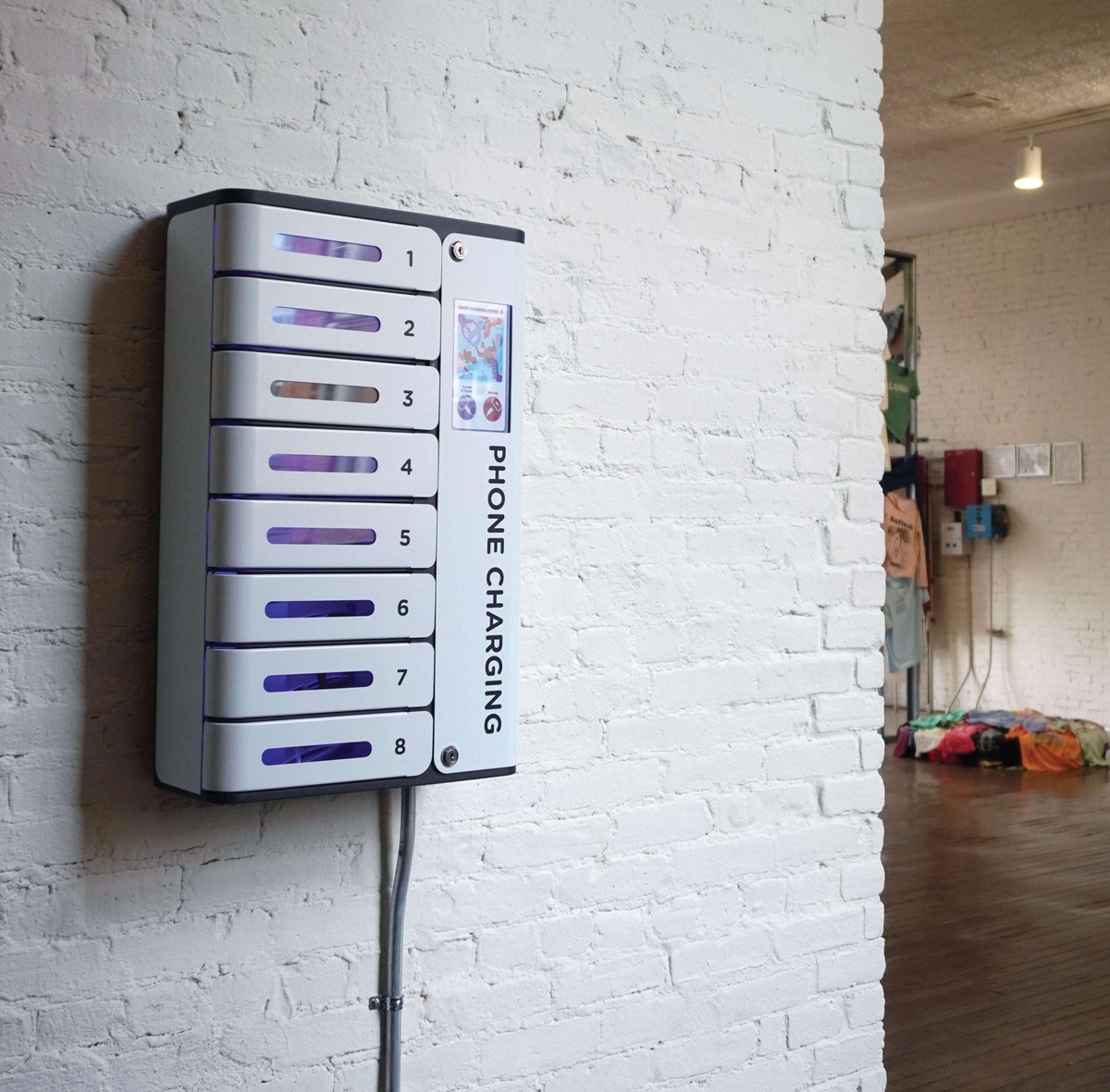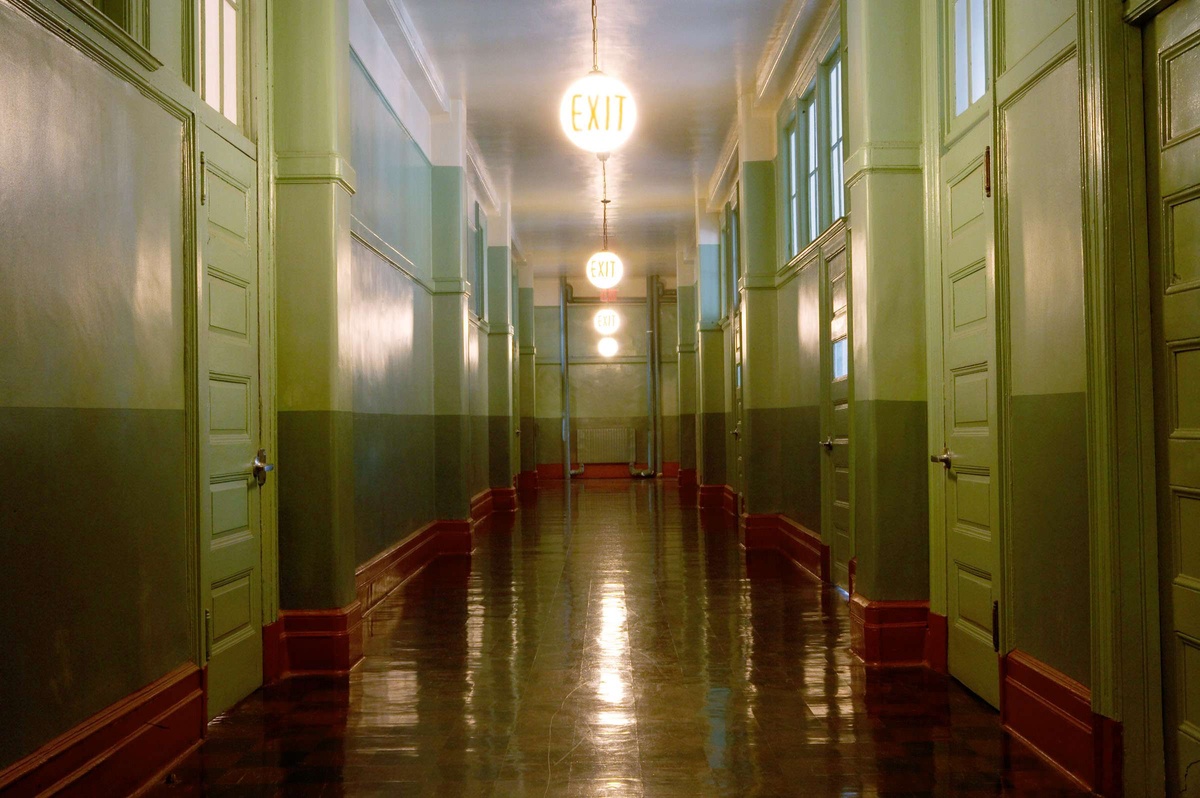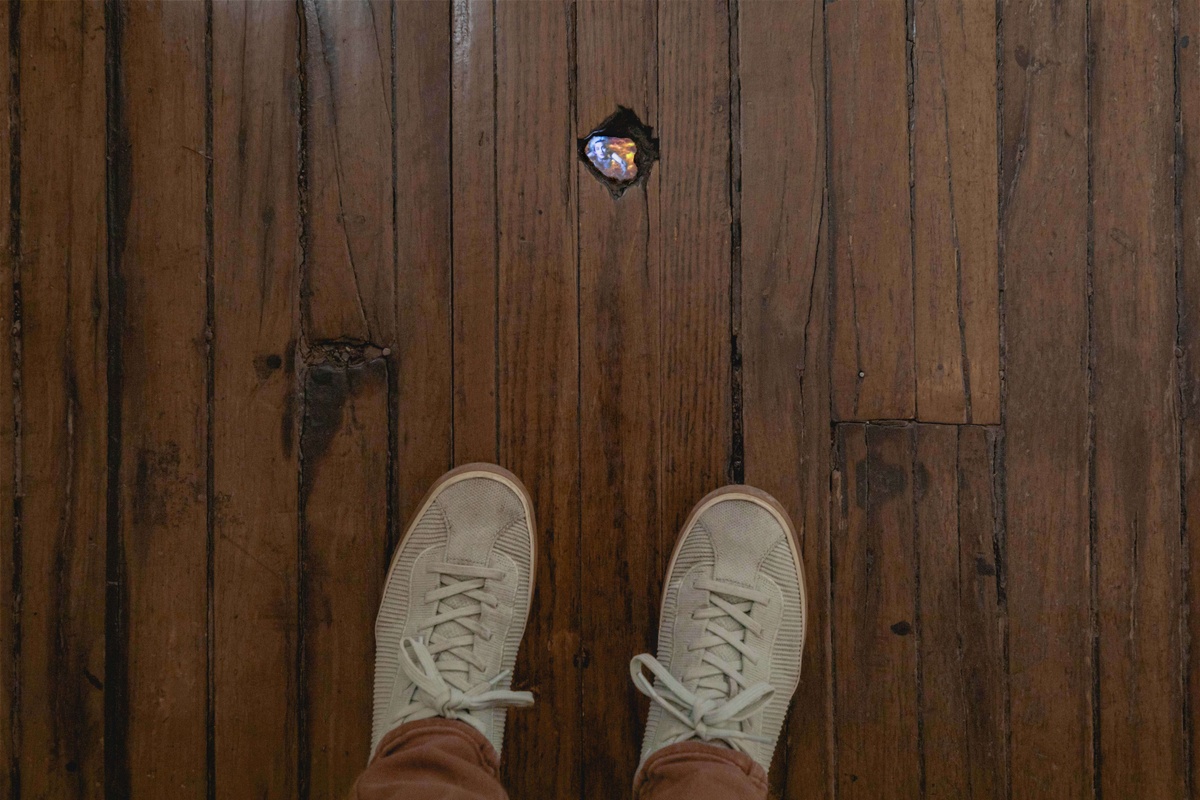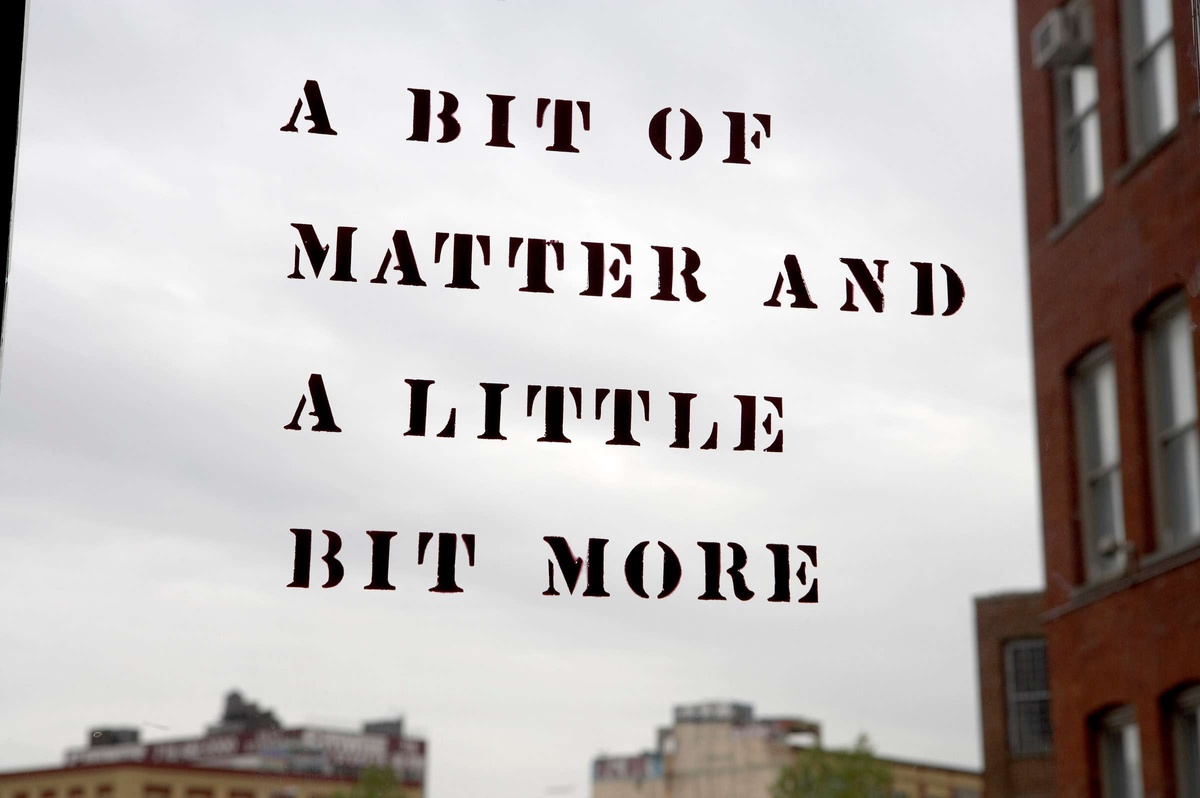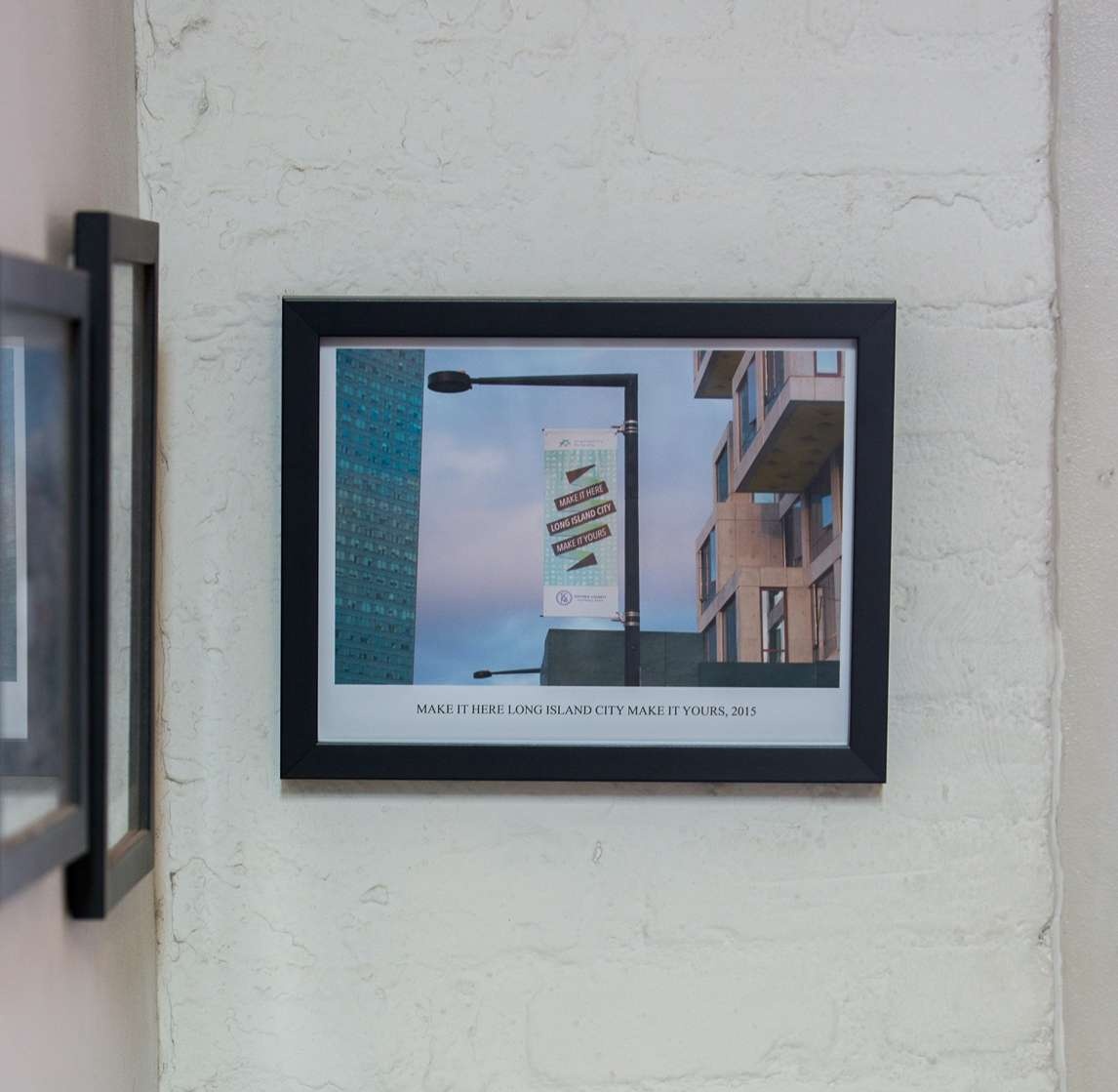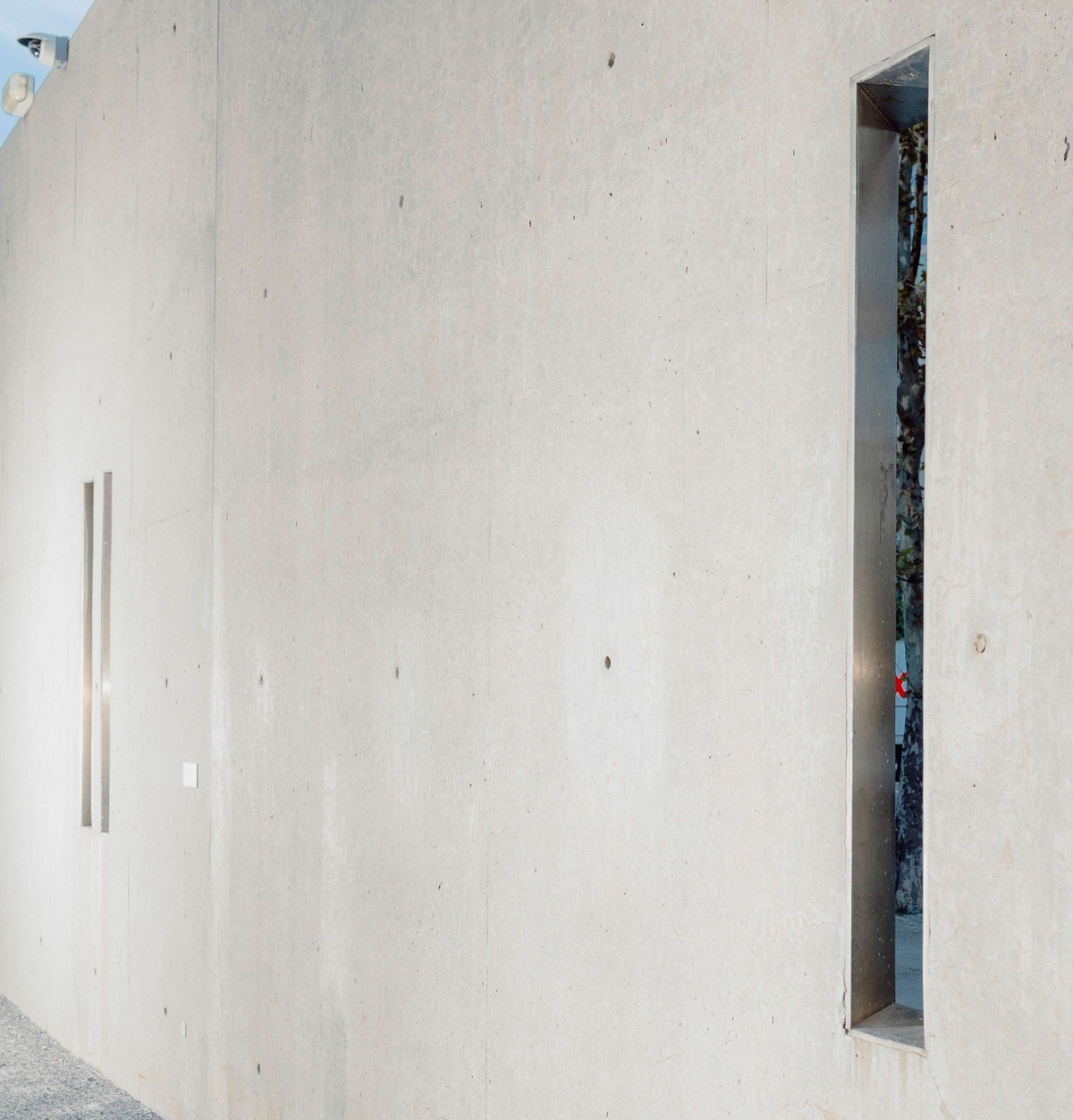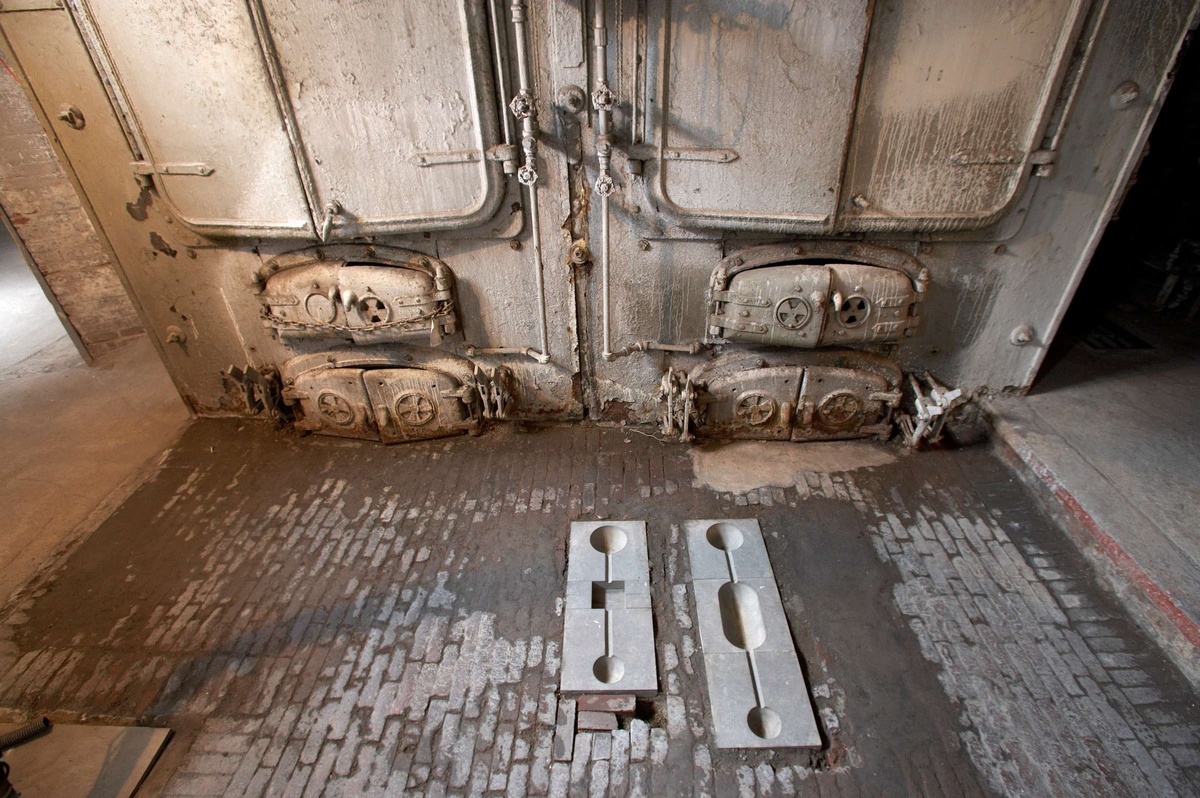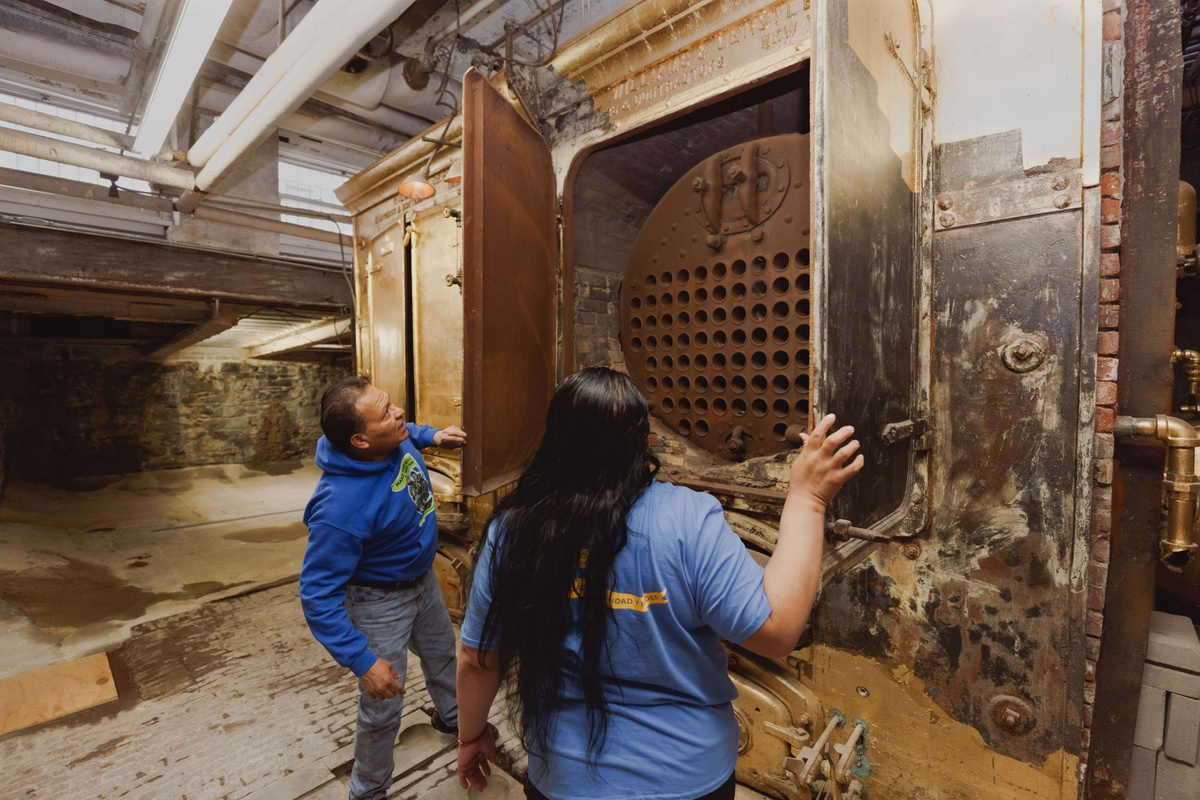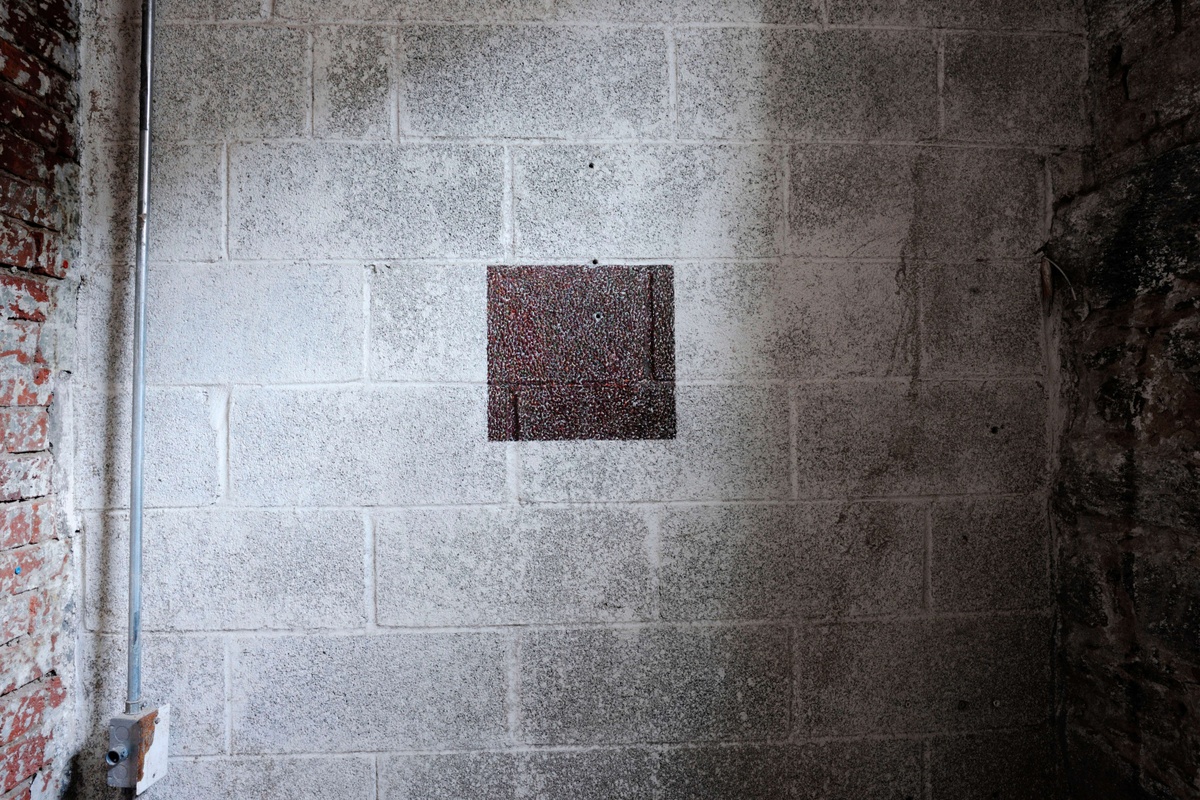Artist Interventions
- Ongoing
- Exhibition
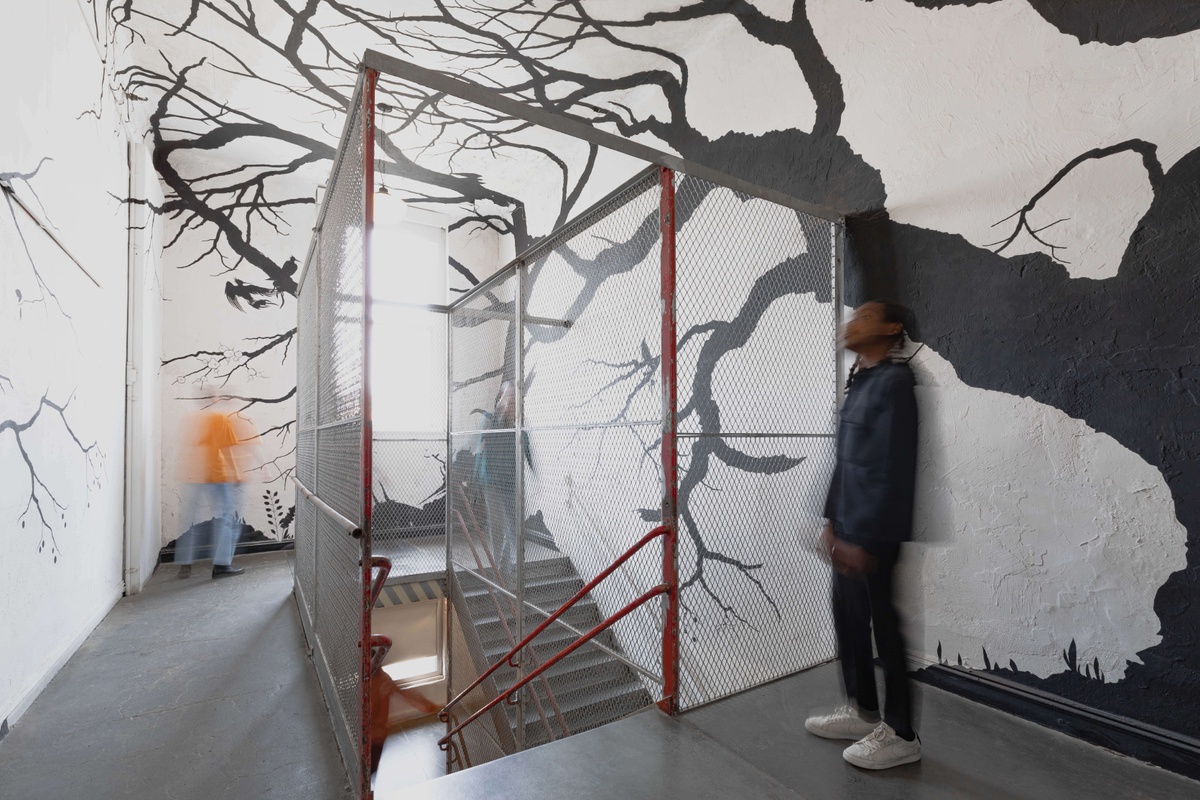
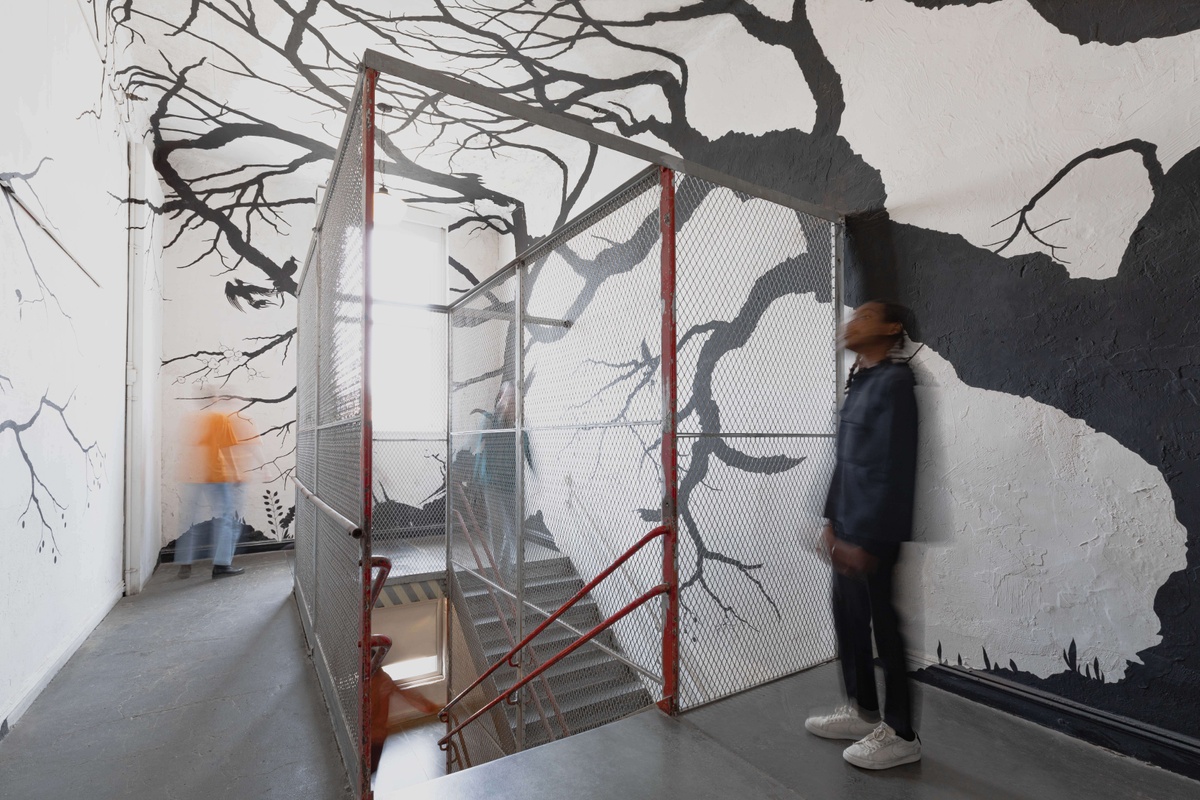
Artists have left their mark on the MoMA PS1 building since the institution opened in 1976. These site-specific works range in scale and materials—some utilize bold or colorful gestures, while others camouflage themselves as architectural elements. Together, the interventions form the building’s “second skin,” a layer of artworks across our campus that offer glimpses into the Museum’s evolution as a site embedded with artists’ visions.
Visitor Engagement staff offer daily gallery talks on these interventions during museum hours. Schedules are available on site.
James Turrell: Meeting
One of artist James Turrell’s celebrated Skyspaces, Meeting is a site-specific installation that invites viewers to gaze upwards toward an unobstructed view of the sky. A key representative of the “Light and Space” movement centered in Los Angeles during the 1960s, James Turrell creates works of art that consist primarily of light, exploring fundamental questions about the nature of human perception by rendering tangible the act of vision.
Meeting was the second Skyspace that Turrell constructed and the first in the United States—becoming a prototype for the many subsequent such works he would construct over the following decades. Originally commissioned in 1976 for the museum’s inaugural exhibition, the work was not realized until 1980, and Turrell continued to make modifications until it opened to the public in 1986. In 2016, after a renovation that replaced the original seating and added a new multi-colored lighting program synchronized with the sunrise and sunset, Meeting entered the collection of The Museum of Modern Art. Learn more about visiting Meeting.
William Kentridge: Stair Procession
This site-specific installation was curated by Carolyn Christov-Bakargiev as part of the Vertical Painting series initiated by Alanna Heiss in 1997. Created for the northwest stairwell, Stair Procession is a white-on-black drawing similar to white chalk graffiti. The constricted nature of the staircase played a role in the artist’s decision to use anamorphic distortions. Kentridge evokes the building’s original function as a public school in establishing both the subject matter and method.
Alan Saret:
The Hole at P.S.1, Fifth Solar Chthonic Wall Temple
The Hole at P.S.1, Fifth Solar Chthonic Wall Temple
In all of his work, Alan Saret shows great interest in using mutable material to create non-static sculptures. As he stated: “The flexure of each material draws a line in space which corresponds identically to its physical properties. Nature, therefore, draws the final line in the art.” In The Hole at P.S.1, Fifth Solar Chthonic Wall Temple, sunlight is the natural medium that influences the general shape of the sculpture. As part of MoMA PS1’s initial exhibition Rooms, this site-specific installation consists of a carefully sized and shaped hole dug out of the brick wall. When the sunlight faces the exterior side of the building, a focused stream light enters the hallway and shines down to the floor.
Ernesto Caivano:
In the Woods
In the Woods
Ernesto Caivano’s wall mural is based on an ongoing story he developed over three years called After the Woods. While After the Woods consists of drawings and paper sculptures, In the Woods is composed of black latex paint and gouache to create a dense visual web of images composing Caivano’s larger-than-life sized environment. The exaggerated scale of the piece creates a total experience for the viewer, allowing an escape into this imaginary world. Naked and gnarled tree branches wind around the walls and sprout up and out onto the ceiling, entangling the viewer in their dark and magical embrace.
Poncili Creación: Dwellers
Influenced by a legacy of street theater, Poncili Creación infiltrates public space and fosters community through their performances, puppetry, and sculpture. Originally installed as part of the exhibition Life Between Buildings, these “dwellers” continue to claim scraps of space throughout the building. As the artists state, “These gnomes are monuments to the countless squatters of time immemorial that have made creative use out of the surplus of capitalist rubble. May these objects, contemporary as they may be, serve as decentralized shrines to honor human resilience against the pre-established norm.”
(up against the wall motherfuckers): Rirkrit Tiravanija
This mural was composed over the course of the exhibition Rirkrit Tiravanija: A LOT OF PEOPLE (October 12, 2023–March 4, 2024) by artists who work at the museum and members of Queens-based organizations including Teen Art Salon and Make the Road New York. The charcoal drawings are tracings of photographs, sourced from print and digital media outlets, of protests against recent book bans in public schools across the US, a topic at the heart of contemporary debates over education, censorship, and how history is told. Since 2002, Tiravanija has clipped and saved images of demonstrations from major international newspapers, charting recent and historic activism occurring despite the pervasive sense that there is, as he put it at the time, “no future.” Tiravanija has created numerous drawings and murals based on this collected media imagery, in each instance inviting collaborators to execute them.
Cecily Brown:
Untitled
Untitled
Cecily Brown created Untitled for the 1997 group exhibition Vertical Painting.
Richard Artschwager: blps
Richard Artschwager’s unique ovular forms were prevalent in the late 1970s and 1980s. The artist placed them in various locations around New York City, including subway platforms and smokestacks. His intention was to bring the public’s attention to surfaces and structures that usually go unnoticed. Installed throughout the hallways and stairwells of MoMA PS1, they highlight the building’s architecture and reference the way in which visitors move through the space.
Abigail Lazkoz: Cameraman
Abigail Lazkoz created the series Cameramen in 2002 and displayed it for the first time in MoMA PS1’s exhibition Greater New York in 2005. The work consists of three large-scale drawings that reinterpret Jose Guadaulpe Posada’s 1914 engraving Se Aproxima el Fin del Mundo Las Profecias Se Cumplen Temblores, Erupciones, Guerras, Pestes, Hambres E Incendios. La Celebre Madre Matiana (The end of the World is Near, Prophecies Come True, Earthquakes, Eruptions, Wars Diseases, Famine, and Fires).
Alexis Rockman: Untitled
Alexis Rockman’s Untitled was created for the series Vertical Painting in 1997. It is part of a series of magical animals rendered in gouache.
Bill Hayden: Untitled
As part of his contribution to Greater New York 2021, artist Bill Hayden instructed the museum to install a cell phone charging station in the lobby, which remains on view. A readymade meant for public use, the charging station emphasizes service and utility over aesthetic value. Hayden’s practice looks at the operation of artistic currency; bucking demands for visibility, his works sometimes dissolve into functions of everyday life.
Richard Artschwager: Exit–Don’t fight City Hall
Richard Artschwager’s site-specific installation was completed in 1976 as part of MoMA PS1’s inaugural exhibition Rooms. By painting the word “Exit” on each of the five bulbs illuminating the corridor, the artist brings new meaning to ubiquitous signage, and also brings to attention the importance of a non-neutral exhibition space.
Pipilotti Rist: Selbstlos im Lavabad
(Selfless in the Bath of Lava)
Selbstlos im Lavabad is comprised of a small video embedded in a hole on the floor. In the video, the artist swims nude in an incandescent lava bath and cries out “I am a worm and you are a flower!” This video was first exhibited in Basel, Switzerland, in 1994. In a later exhibition in Zürich, Switzerland, the video was placed at the foot of a Madonna and Child sculpture emphasizing the religious notion of damnation as suggested by the video.
Lawrence Weiner:
A bit of matter and a little bit more
A bit of matter and a little bit more
Originally part of the exhibition Rooms in 1976, Lawrence Weiner wrote the title phrase on the inside of the front entrance as well as on the outside of the back door of MoMA PS1. The original doors, made of wood and metal, were removed during the renovation in 1997. After the renovation was completed, the artist was invited back to recreate the piece on both sides of the glass windows of the front doors.
Park McArthur:
Welcome to MoMA PS1
Welcome to MoMA PS1
Park McArthur installed Welcome to PS1 in the museum’s entry as part of the exhibition Greater New York 2015, where it has remained since. Adding it to the preexisting sequence of photographs to its left, which depict moments in the history of MoMA PS1, McArthur stages a critique of the intertwined history of art institutions, gentrification, and urban renewal. In McArthur’s words: This photograph was made for the Museum’s lobby, the place where the story of important or representative moments in the history of PS1 unfolds. The photograph depicts a banner, found all across the Long Island City area of Queens, which espouses ownership as a creative force. The banner is flanked by two of the area’s main actors: a glass skyscraper and a condominium building under construction. Together, the banner, the skyscraper, and the condominium stage a drama familiar to residents living in many of the world’s urban centers: that of the financialization of place and the reconstruction of neighborhood through the instrumentalization of arts and culture.
Eric Orr: Wall Slits
When MoMA PS1 underwent a renovation in 1997, the artist Eric Orr was invited to create an site-specific installation for the new concrete walls encircling PS1’s courtyard. Aiming to create a more porous relationship between the courtyard and the street, Orr installed three vertical slits in the courtyard wall facing Jackson Avenue. For a 1982 exhibition at PS1, Orr had constructed a similar vertical slit in the museum’s attic; titled Nothing Special (1982), the installation functioned as a pinhole camera offering a view of the Empire State Building. Alongside artists such as James Turrell, Maria Nordman, and Robert Irwin, Orr was a key figure in the Light and Space movement that emerged in Los Angeles in the 1960s. Through interventions, installations, and architectural constructions, these artists distilled and heightened sensory awareness—using light, sound, and space as their media. Influenced by ancient ritualistic and shamanistic practices, Orr was also keenly interested in the far edges of perception and the experience of emptiness, stating: “I want to get the sense of void inside an object.”
Matt Mullican: Untitled
Renowned for his immense banners, posters and oil stick rubbings, Matt Mullican draws from a personal source of forms and symbols to create his utopian city views. His sign-like works are reflections of the familiar pictograms that one would find in the halls of an airport or a train station. For MoMA PS1, the artist has installed five steel flagstones into the floor of the boiler room. The shape of the artist’s stones reflect the form of the unused flagstones already a part of the boiler room.

Saul Melman:
Central Governor
Central Governor
Saul Melman’s installation is the result of a six-month-long performance during which he chiseled 5,000 pounds of salt block and covered MoMA PS1’s old boiler with gold leaf. Melman transformed the massive structure into a gilded object, making allusions to the alchemical properties that have been long associated with salt and gold. Central Governor was originally presented in the 2010 Greater New York exhibition in conjunction with Aki Sasamoto and her performance and installation Skewed Lies (2010).

Sol LeWitt: Crayola Square
In an attempt to explore the history of Sol LeWitt’s public projects and to record his long-lasting relationship with MoMA PS1, the artist created Crayola Square, a Crayola crayon wall drawing originally created in 1971 at an event organized by PS1 founder Alanna Heiss.

